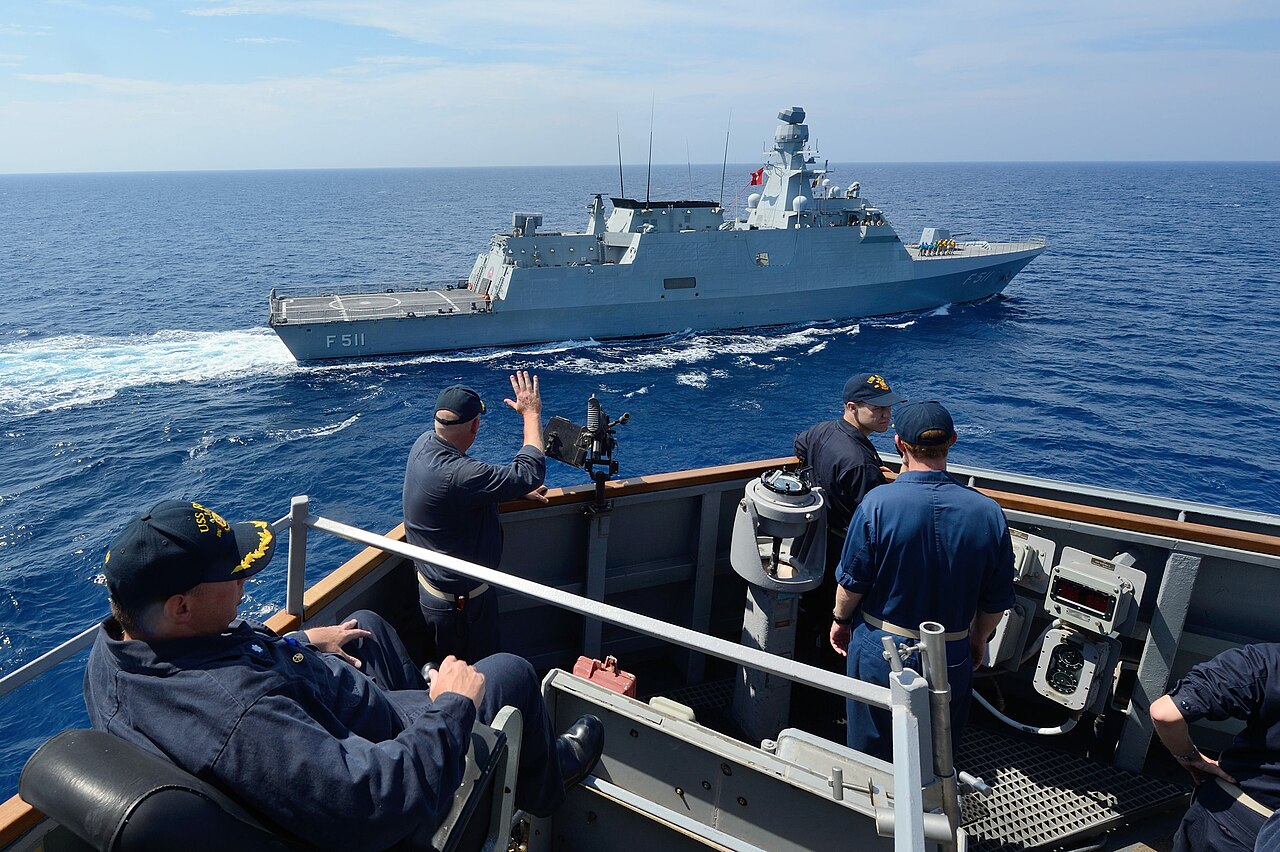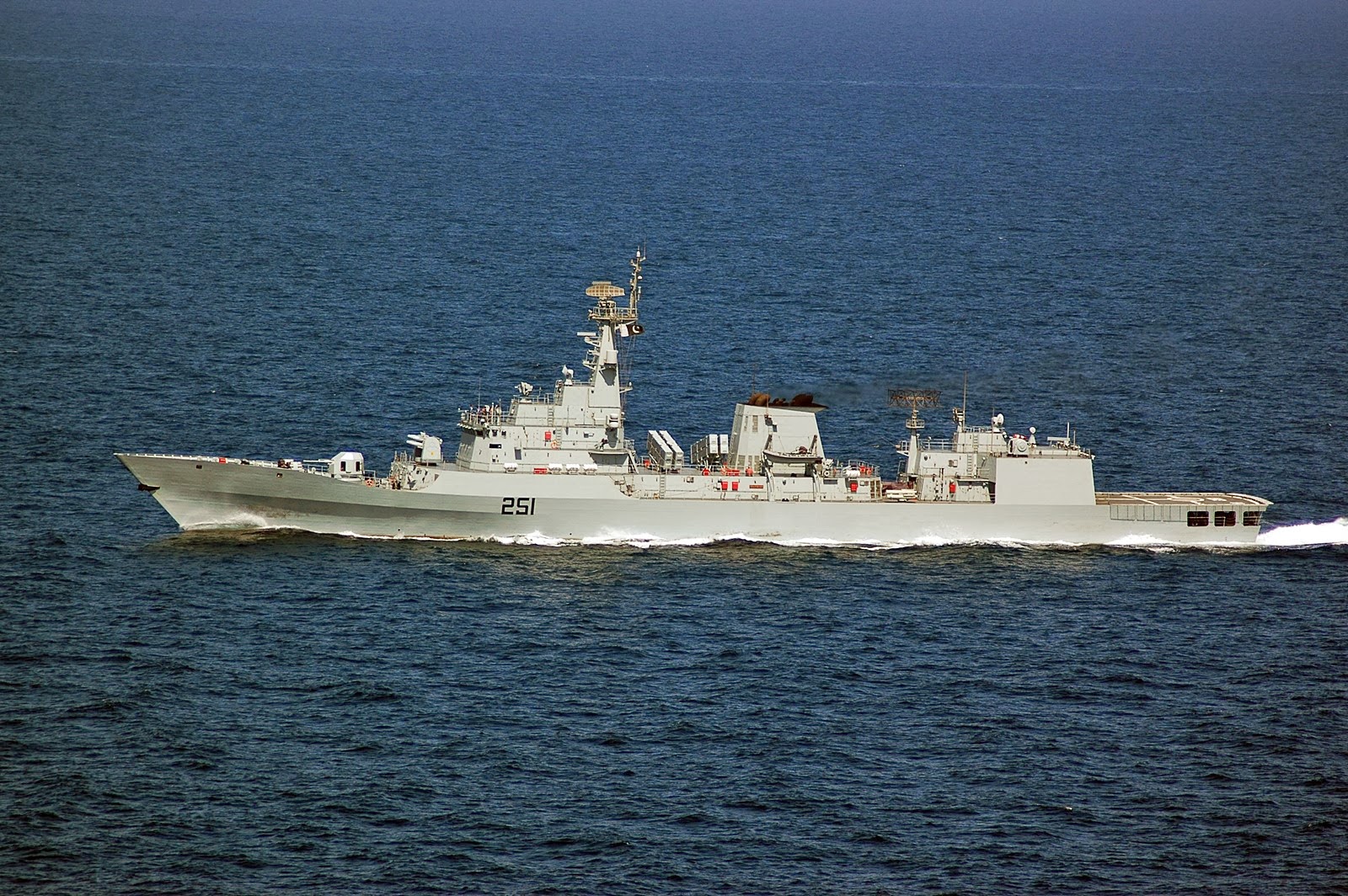Penguin
ELITE MEMBER

- Joined
- Jan 11, 2009
- Messages
- 13,047
- Reaction score
- 56
I did. But you are impatient (I had to go prepare a meal and put kids to bed)Penguin bro, You didn't answer me on the other thread.
Follow along with the video below to see how to install our site as a web app on your home screen.
Note: This feature may not be available in some browsers.

I did. But you are impatient (I had to go prepare a meal and put kids to bed)Penguin bro, You didn't answer me on the other thread.

Could you please explain it in layman's terms---the differences and overall advantage of one over the other.



I'm inclined to agree with the previous poster: there is no 'newest' F22P, just the F22P. But, verhaps you are referring to the ships built by China for Algeria (C28A), to which F22P appears to be a predecessor?
C28A, even if with exact same weapon and sensor fit, would be more stealthy. It doesn't have a stack and exhaust is routes to below the waterline, which reduces thermal signature. Like F22P, C28A could greatly benefit from a VLS with an IR and/or active radar homing SAM. And a towed array sonar.


https://en.wikipedia.org/wiki/C28A_Class_Corvette


The main drawback of C28A is that is continues to use HQ7/FM-90N. Milgem would have to be more affordable than a larger ship: PN faces the need for at least 2 more frigates like F22P just to stop block obsolescence, let alone increase the number of surface combattants. 6+6 would give a nice 2 tier force (and with 4 more Azmat, three tiers: 6+6+6) . PN is not going to be operating in task groups like IN is, centered around some capital ship.Hi,
The reason I asked that question was---I do not understand this procurement----. We already have a very effective frigate F22---.
The C28A that came in later was more advanced than the F22----so that would mean---that if we would ordered one now---it would be more advanced than all of these two----.
If we already have westerns sensors and electronics on the F22---then we can have it on a new chinese frigate---is that right---.
In the weapons lines---how would the current chinese weapons compare to those on this Turkish corvette.
Total life cycle cost?Less personnel by 50+% is a feature worth noting.
It can only work if you have high systems integration.
Which is then another characteristic to weigh in?
Good day all, esp. the avian, Tay.
P.S. High systems integration leads to network-centricity.

The C28A and F-22P are ultimately based on the Jiangwei II or Type 053H3 platform, and I think there is only so much one could do to adapt the design for current and future subsystems. The incorporation of VLS is a big sticky point, especially if the Pakistan Navy is ever envisioning the use of medium-range or even long-range SAM from ships. Sure, CSOC could lengthen the hull, increase the depth, etc, but at what point does it just become designing a new ship?Hi,
The reason I asked that question was---I do not understand this procurement----. We already have a very effective frigate F22---.
The C28A that came in later was more advanced than the F22----so that would mean---that if we would ordered one now---it would be more advanced than all of these two----.
If we already have westerns sensors and electronics on the F22---then we can have it on a new chinese frigate---is that right---.
In the weapons lines---how would the current chinese weapons compare to those on this Turkish corvette.



Need bigger ships to have better firepo2er other wise build 1000 Woden boats put portable mistral SAM in it it can do job for uSince Pakistani Navy is substantially smaller force, the small ship makes sence but having a "Well equiped" ship is a great addition
Ada/F22P in twin ship formation can support each other well in Anti Ship + Modest air coverage.
What would be even more interesting is if we can fit some SAM system for the F22P ship for Air-Air defence role
4 Fast Attack Ships (Anti Ship)
4 F22P (Anti Ship/Anti Air)
4 Ada (Anti Air- Anti Ship)
1 OHP (Anti Submarine)
Would give Pakistan Navy a nice modest coastal defense force
Ada has a nice anti Cruise missile defence launcher
so such a unit would be nice on the chinese ship as well

Almost 30-40 Meter shorter then F22P , would make sense if we bought the slightly bigger ship

The stealth aspect of the Turkish ship are better as less clutter on the deck
Both Ships would do well with some additional armament



While there clearly is 'lineage' from Type 053H3 to F22P to C28A, I think it is a mistake to see it as mere design modifications. There is lineage too with Burevestnik (or Krivak I), Burevestnik M (or Krivak II), Nerei (or Krivak III) to Project 11356 (Talwar class) and Project 11356M (Admiral Grigorovich class) and ultimately project 22350 (Admiral Gorshkov class). Yet, they represent three distinct designs. I see the three Chinese as evolution of design i.e. distinct designs, that build on experience with the previous class. Lets not forget to include the F25T (Naresuan class) for Thailand, which also shows commonalities with the later F22P.The C28A and F-22P are ultimately based on the Jiangwei II or Type 053H3 platform, and I think there is only so much one could do to adapt the design for current and future subsystems. The incorporation of VLS is a big sticky point, especially if the Pakistan Navy is ever envisioning the use of medium-range or even long-range SAM from ships. Sure, CSOC could lengthen the hull, increase the depth, etc, but at what point does it just become designing a new ship?
But, Milgem 2 is clearly a stretched Milgem 1.With the Ada-class corvette and MILGEM in general, the Pakistan Navy is getting a new design with loads of growth and development potential, as evident with the TF-100 program underway.
There are some more considerations/trade-offs. A small crew is less important for nations where 'labor' is cheap, while the required integration and automation make a vessel more expensive to purchase and possibly more difficult to maintain independently, depending on the level of development of the country whose navy operates a ship.Besides being more efficient to operate,
If I put a some 'fire and forget' VL SAMs on F22P or C28A, it too will vastly improve AAW. For example, 2.3m CAMM/Sea Ceptor (25+km)/4.4m CAMM-ER (45+km), 3.32m Umkhonto-IR (20km)/'fatter' Umkhonto-ER-IR (30km)/ longer Umkhonto-R (60km), the 2.9m IRIS-T SLS (25km)/ longer IRIS-T SLM (40km). Even the 3.1m Mica VL will give 20km, 2 seeker types, 360 degree coverage and ability to deal with multiple missiles arriving simultaneously from multiple directions. And, eventually, an 3.99m ESSM with active seeker from AI-120. All else that is needed is a good 3D radar set.the MILGEM can potentially be equipped with a superior anti-air warfare set compared to the F-22P/C28A, and that while maintaining comparable AShW, ASW and offshore patrol capabilities.




In naval shipbuilding, the ship (steel) itself is not where the main costs of a ship are. Those costs are prdominantly with the systems placed on board. So, an oversized (relatively underarmed) ship may actually be preferable to a smaller, (much) more densely packed ship. E.g. from the point of view of seakeeping and ability to absorb battle damage. So, here too, there are trade-offs.Over the long-term, Pakistan could piggyback on Turkey's MILGEM development road-map and potentially induct the TF-100, which would be of similar size to the F-22P, but much better armed (16 AShM vs. 8, 16 VLS cells vs. 0).

Based on that, it would seem there are negligible differences between the Ada-class and F-22P. Could the rationale for the Ada ultimately just boil down to availability of funds - i.e. Turkey's willingness to extend a loan, and Pakistan coming to a limit on its credit tab with China (for the time being)?While there clearly is 'lineage' from Type 053H3 to F22P to C28A, I think it is a mistake to see it as mere design modifications. There is lineage too with Burevestnik (or Krivak I), Burevestnik M (or Krivak II), Nerei (or Krivak III) to Project 11356 (Talwar class) and Project 11356M (Admiral Grigorovich class) and ultimately project 22350 (Admiral Gorshkov class). Yet, they represent three distinct designs. I see the three Chinese as evolution of design i.e. distinct designs, that build on experience with the previous class. Lets not forget to include the F25T (Naresuan class) for Thailand, which also shows commonalities with the later F22P.
But, Milgem 2 is clearly a stretched Milgem 1.
There are some more considerations/trade-offs. A small crew is less important for nations where 'labor' is cheap, while the required integration and automation make a vessel more expensive to purchase and possibly more difficult to maintain independently, depending on the level of development of the country whose navy operates a ship.
If I put a some 'fire and forget' VL SAMs on F22P or C28A, it too will vastly improve AAW. For example, 2.3m CAMM/Sea Ceptor (25+km)/4.4m CAMM-ER (45+km), 3.32m Umkhonto-IR (20km)/'fatter' Umkhonto-ER-IR (30km)/ longer Umkhonto-R (60km), the 2.9m IRIS-T SLS (25km)/ longer IRIS-T SLM (40km). Even the 3.1m Mica VL will give 20km, 2 seeker types, 360 degree coverage and ability to deal with multiple missiles arriving simultaneously from multiple directions. And, eventually, an 3.99m ESSM with active seeker from AI-120. All else that is needed is a good 3D radar set.

This could easily mount 1x8 or 2x8 cells forward of the bridge. At least some of the missiles mentioned about e.g. could be quad packed in a Mk41 (e.g. Sea Ceptor, ESSM), while others would have their own VLSs. ANother option would be toe but the AShM forward of the bridge and use the amidships area for VLSs. While retaining 2x gun-CIWS.
In naval shipbuilding, the ship (steel) itself is not where the main costs of a ship are. Those costs are prdominantly with the systems placed on board. So, an oversized (relatively underarmed) ship may actually be preferable to a smaller, (much) more densely packed ship. E.g. from the point of view of seakeeping and ability to absorb battle damage. So, here too, there are trade-offs.

Funding plus willingness to sell to and provide support to PN ships. I do not know how Ada class is in terms of radiated noise, thermal signature, fire extinguishing and damage control capability, watertight division and ability to remain afloat with some compartments flooded. Early chinese ships (Jianghu) did very poorly in those areas. The Thai navy experience has helped improvements in those area but, as indicated, don't know what is the current state of affairs.Based on that, it would seem there are negligible differences between the Ada-class and F-22P. Could the rationale for the Ada ultimately just boil down to availability of funds - i.e. Turkey's willingness to extend a loan, and Pakistan coming to a limit on its credit tab with China (for the time being)?

